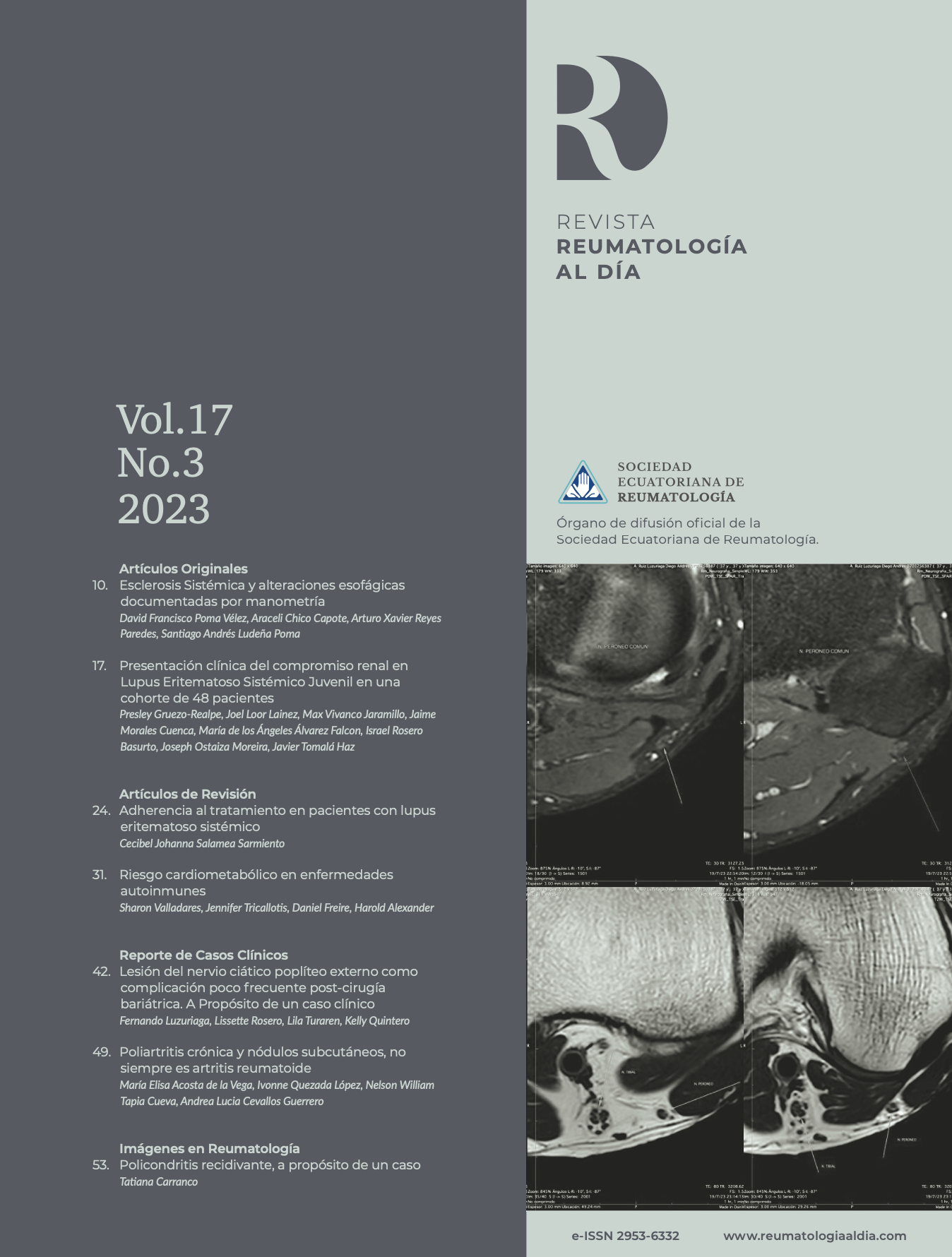Chronic polyarthritis and subcutaneous nodules are not always rheumatoid arthritis
Published 2023-12-27
Keywords
- Chronic polyarthritis,
- subcutaneous nodules,
- atypical mycobacterium
How to Cite
Copyright (c) 2023 Reumatología al Día

This work is licensed under a Creative Commons Attribution-NonCommercial-NoDerivatives 4.0 International License.
Abstract
Introduction: Chronic polyarthritis and subcutaneous nodules are usually associated with rheumatoid arthritis (RA) or gout, and less frequently with sarcoidosis, amyloidosis and bacterial or fungal infections.
Clinical case: We present the case of a 57-year-old Ecuadorian woman, living in a tropical climate with personal history of haemolytic anaemia secondary to systemic lupus erythematosus, treated with corticosteroids and mycophenolate for more than 10 years, who was referred with asymmetric chronic polyarthritis of the hands, dactylitis and several subcutaneous nodules diagnosed as RA, with little to non-improvement with conventional disease modifying antirheumatic drugs (DMARDs). She had a high erythrocyte sedimentation rate (ESR) and C-reactive protein with RF (rheumatoid factor), anti-CCP (antibody Cyclic Citrullinated Peptide antibody) negative, and X-rays with no erosive lesions. Because of this, further investigation was required, therefore a nodule biopsy was performed with granulomatous changes and a negative Ziehl–Neelsen stain. A PCR for atypical mycobacterium was also preformed where mycobacterium marinum was isolated. Subsequently, she was started on an antibiotic regimen with clarithromycin, and ethambutol with swelling and pain improvement.
Conclusion: It's important to suspect infection by nontuberculous mycobacteria in patients with polyarthritis, especially of the hands and subcutaneous nodules, particularly in immunosuppressed patients who present an atypical form for inflammatory arthritis.


